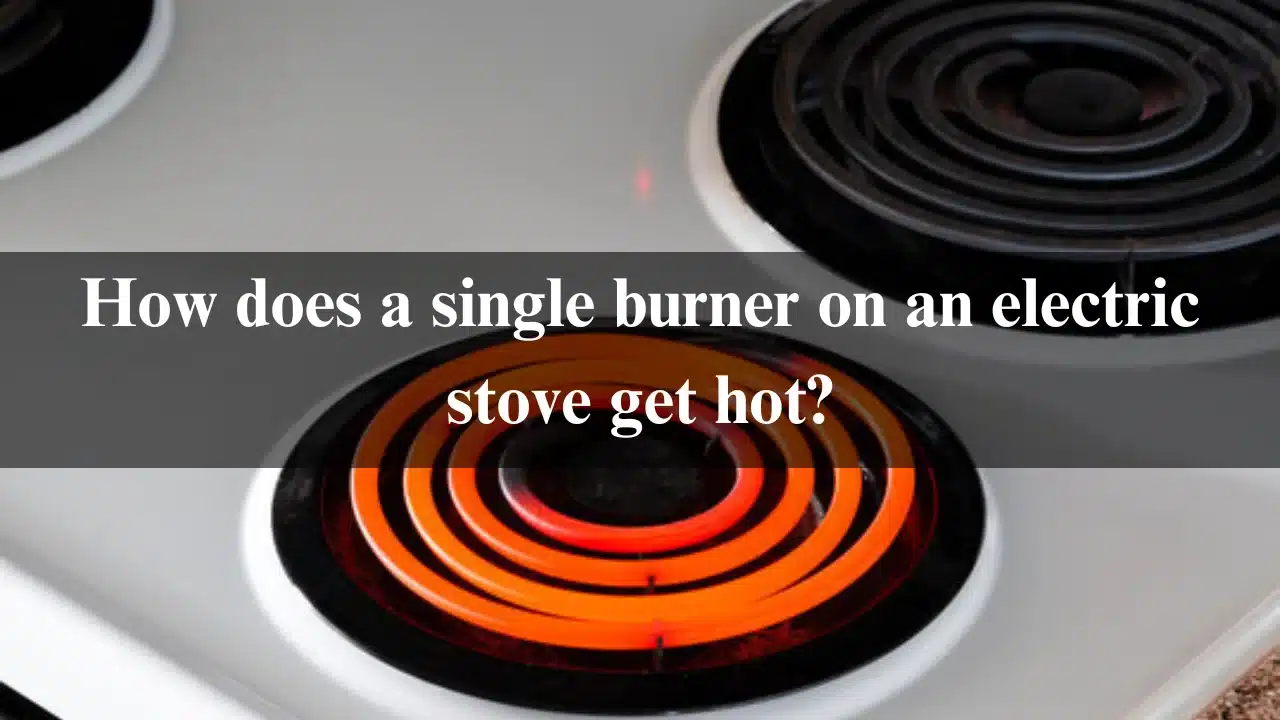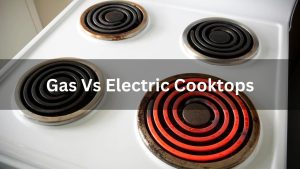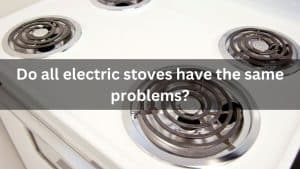Hey there! Ever wonder how your electric stove heats up so quickly when you’re making dinner? Or maybe you’re just curious about how that one little burner gets hot enough to cook your favorite meal? You’ve come to the perfect spot!
By the end of this article, you’ll have a better understanding of how a single burner on an electric stove works. We’ll break it down step by step in a way that’s easy to follow—and fun!
Table of Contents
The Basics of Electric Stoves
What Is an Electric Stove?
An electric stove is a kitchen device that generates heat using electricity to cook food. Unlike gas stoves that rely on an open flame, electric stoves heat up metal coils or a glass-ceramic surface to cook food.
How Does It Differ from a Gas Stove?
While gas stoves use burning gas to heat pots and pans, electric stoves use—yep, you guessed it—electricity! This makes electric stoves safer in many ways because you don’t have to worry about gas leaks. Plus, they’re easier to control because you just turn a knob, and boom, the heat is on.
How Does Electricity Create Heat?
What Is Electricity, Anyway?
Before we dive into how the burner works, let’s start with electricity. Electricity is a form of energy that powers many things in your home, from lights to your TV. In the case of your stove, electricity moves through wires in the burner, but how does that make it hot?
Resistance: The Key to Heating
Here’s where the magic happens! When electricity flows through the burner, it encounters something called resistance. Resistance is like a speed bump for electricity. The harder it is for the electricity to get through, the more energy it loses in the form of heat. That heat is what makes the burner hot enough to cook your food!
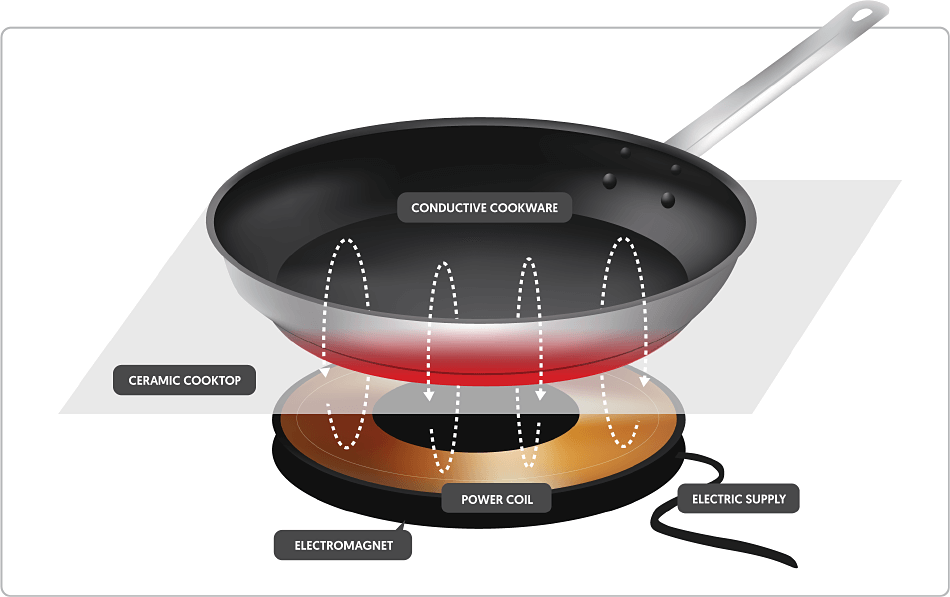
Think of it like riding a bike uphill. You have to work harder, and that effort makes you sweat. Similarly, the electricity works harder to move through the burner, and it releases heat along the way.
Inside the Burner: How It Heats Up?
Parts of a Burner
A burner on an electric stove is made of a few key parts:
- Heating Element: This is usually a coil made of metal. It’s the part that glows red when it gets hot.
- Electric Wires: These wires carry electricity from your home to the burner.
- Control Knob: The knob you turn to set the temperature, controlling how much electricity flows through the burner.
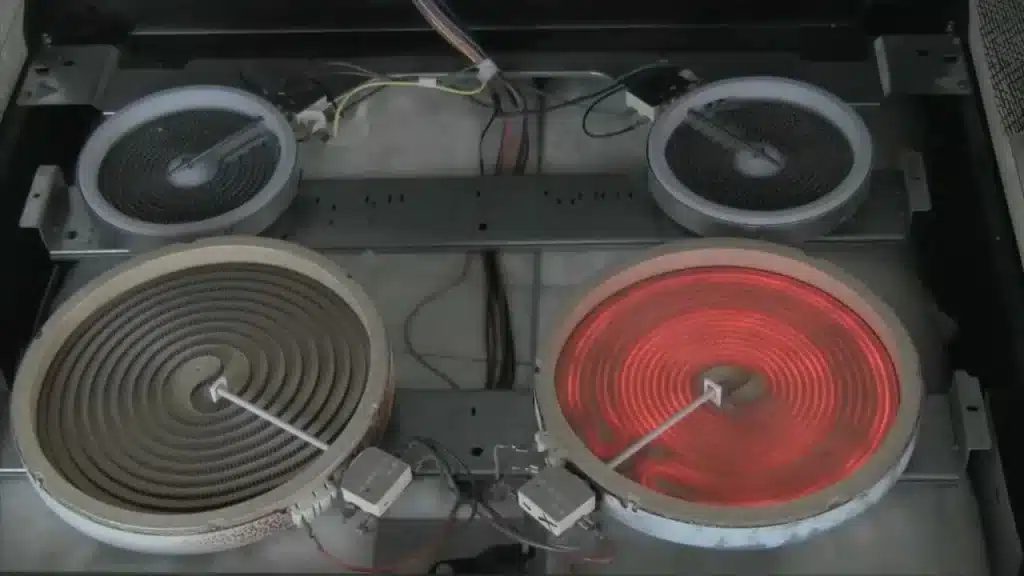
The Heating Process Step-by-Step
- Turning the Knob: When you turn on the stove, electricity flows from your home’s electrical supply into the burner’s heating element.
- Resistance Happens: The heating element is designed to resist the flow of electricity, creating heat. The more you turn the knob, the hotter the burner gets!
- The Red Glow: As the burner heats up, it starts to glow red. That’s your signal that it’s ready to cook!
Detailed note on how a single burner electric stove gets hot?
Electric stoves operate through a well-engineered process that efficiently converts electrical energy into heat. When you turn on a burner, several components work together to generate the heat needed for cooking. Here’s a breakdown of how a single burner on an electric stove top gets hot:
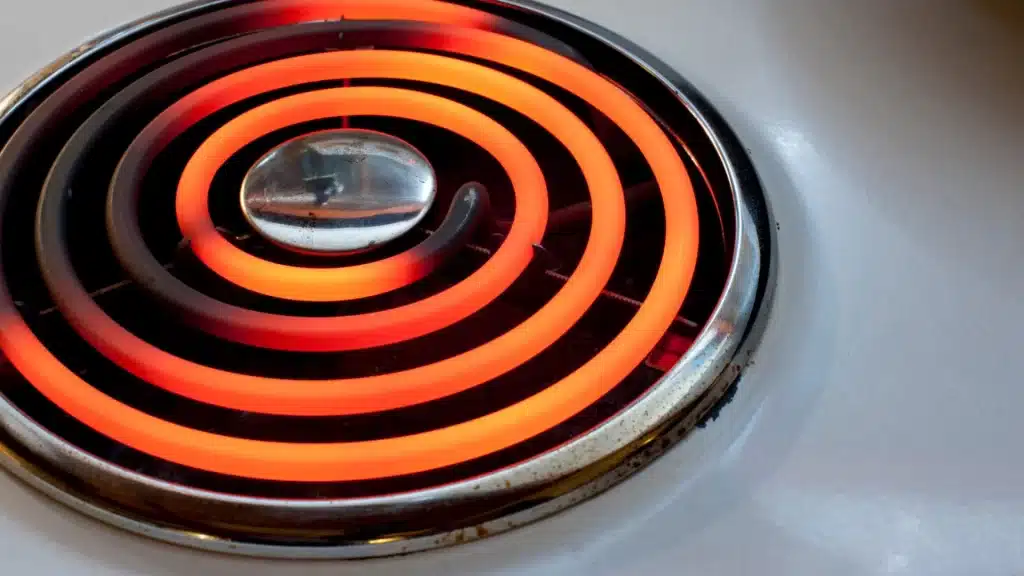
The Role of the Heating Element
The heating element is the central part of an electric stove burner. It’s typically made of a metal alloy like nichrome (a blend of nickel and chromium) that has high electrical resistance. When electricity flows through this element, the resistance causes the metal to heat up. This process, known as Joule heating, transforms electrical energy into thermal energy.
Electric Current and Resistance
When you turn the knob to activate the burner, you close the circuit, allowing electricity to flow through the heating element. Due to the material’s resistance, the electrical energy doesn’t pass through easily. This resistance creates friction within the element, generating heat.
Temperature Control Mechanism
Electric stoves come equipped with temperature control mechanisms. The knob you turn to control the heat output is connected to a thermostat or variable resistor, which adjusts the flow of electricity. Lower settings reduce the current, leading to less heat, while higher settings increase the flow, generating more heat.
Insulation and Heat Distribution
To ensure that the heat generated by the burner is directed upwards toward the pot or pan, stoves often incorporate insulation materials underneath the burner. This prevents heat from dissipating downward, focusing the thermal energy where it’s needed most.
Radiant Heat Transfer
Once the heating element becomes hot, it transfers heat to the cookware through radiant heat. As the element glows red-hot, the thermal energy radiates outward, heating the base of the pot or pan resting on the burner.
How Does Heat Transfer from Burner to Cookware?
There are three main ways heat is transferred from the burner to your cookware: conduction, convection, and radiation.
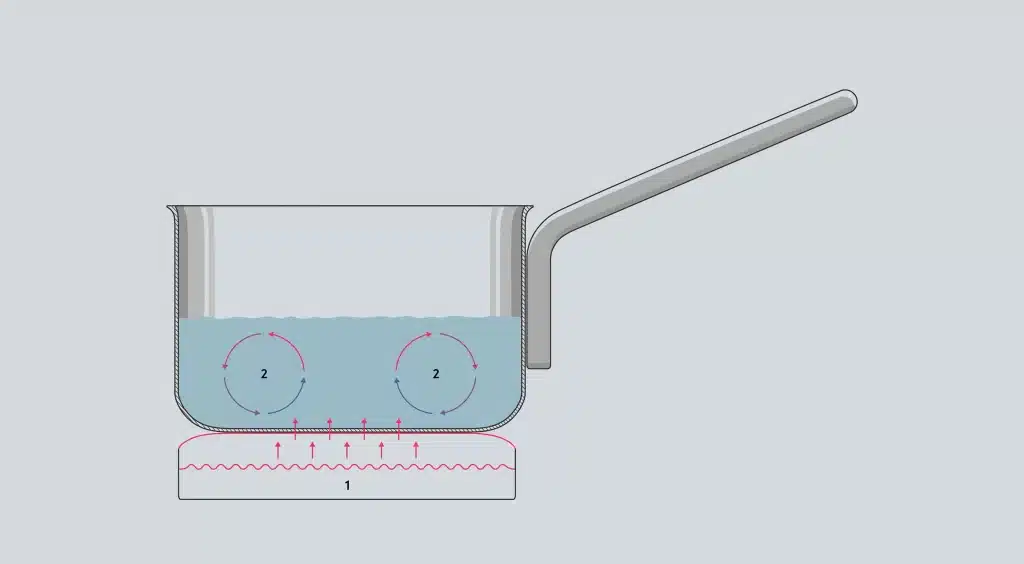
- Conduction: This is the direct transfer of heat from the hot burner to the pot or pan placed on top. The metal surface of the cookware picks up the heat and distributes it evenly across the surface.
- Convection: Although not a major player in electric stoves, convection occurs when the surrounding air heats up and circulates the cookware.
- Radiation: This refers to the infrared heat that radiates from the glowing coil or burner directly to the bottom of the pot or pan.
| Type of Heat Transfer | How It Works | Efficiency |
| Conduction | Direct contact between burner and cookware | High |
| Convection | Air circulates the cookware | Low |
| Radiation | Infrared heat from the coil or surface | Medium |
Does a Glass-Top Electric Stove Work Differently?
Yes, glass-ceramic electric stoves use a different system than coil burners. The burners are still electric, but the heating elements are located beneath a flat glass-ceramic surface. The heat is transferred through radiant heating from the elements below. The surface remains smooth, making it easier to clean, but it also requires cookware with a flat bottom for better heat transfer.
| Type | Heating Mechanism | Advantages |
| Coil Burner | Resistive heating with nichrome coil | More even heat distribution, durable |
| Glass-Top Burner | Radiant heating with glass-ceramic surface | Sleek, easy to clean, modern |
Are All Electric Stoves the Same?
Electric stoves aren’t all the same. While the basic principle of resistive heating remains the same, the efficiency, heat distribution, and control vary across models. Some electric stoves heat more evenly, while others have faster heat-up times or more precise temperature controls.
How to Control Temperature Effectively on an Electric Stove?
Controlling the temperature on an electric stove burner can be tricky at first, especially if you’re used to the instant response of gas. However, here are some tips to get it right:
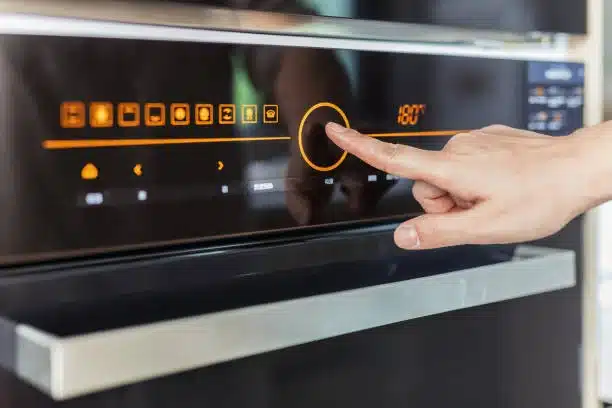
- Use the right cookware – Flat-bottomed pots and pans ensure even heat distribution.
- Preheat the burner – Electric burners take time to heat up, so allow a few minutes for the burner to reach the desired temperature.
- Adjust settings gradually – Electric stoves don’t cool down immediately, so make small adjustments to avoid burning food.
- Use a thermometer – For precise cooking, especially for recipes requiring exact temperatures, a thermometer can be helpful.
Safety First: How Do Burners Stay Safe?
How do Burners Keep from Overheating?
You might wonder: if the burner gets so hot, why doesn’t it overheat? Electric stoves have built-in safety features, like thermostats and temperature sensors, that monitor the heat. If things get too hot, the electricity automatically shuts off to let the burner cool down.
Why Do Some Burners Stay Warm Even After They’re Turned Off?
Have you ever noticed that your stove stays warm even after you turn it off? This happens because the burner holds onto some heat after the electricity is cut off. It’s like when you take a cookie sheet out of the oven—it stays hot for a while before it cools down.
Cool Facts About Electric Stoves
How energy efficient are electric stoves?
Electric stoves are pretty energy-efficient, especially when compared to gas stoves. Some studies show that electric stoves can use up to 30% less energy than gas stoves. That’s good news for both your energy bill and the environment!
Fun Stats About Home Cooking
- Did you know that around 90% of households in the U.S. own an electric stove or oven?
- On average, people spend over 400 hours a year cooking in their kitchens! That’s a lot of time standing next to a hot stove.
Related Articles:
Is It Possible To Use Two Electric Stoves At The Same Time?
How many burners are there on an electric stove? 5 Types
Are Induction Stoves Considered Inductive Loads? 2024
What Are the Pros and Cons of Gas and Electric Stove Tops?
Why Do Induction Stoves Make Those Annoying Clicks? 2024
Conclusion:
Electric stoves, particularly single burners, are a fascinating blend of science and engineering. By using resistance to convert electrical energy into heat, they provide a reliable and efficient cooking method. The heating element, whether it’s a coil or beneath a sleek glass-ceramic surface, works to evenly distribute heat, ensuring your food cooks properly. Understanding how heat is transferred—through conduction, convection, and radiation—helps you use your electric stove top more effectively. With built-in safety features, temperature control mechanisms, and modern designs, electric stoves are a mainstay in many kitchens today. Whether you’re whipping up a quick meal or mastering a complex dish, knowing how your stove works gives you an edge in the kitchen!
Key Takeaways:
- Electric stoves heat up through a process called resistance, where electricity meets resistance and turns into heat.
- The burner contains a heating element, electric wires, and a control knob to regulate the heat.
- Safety features like thermostats help prevent overheating.
- Electric stoves are energy-efficient and common in many homes.
FAQs
Why does my electric stove burner take so long to heat up?
Electric burners require time to transfer heat through resistive coils, unlike gas or induction which offer instant heating.
Can I repair a faulty burner myself?
You can attempt minor fixes like replacing coils, but for electrical issues, it’s safer to hire a professional.
Why does the burner turn red when it heats up?
The red glow is due to the heating element reaching high temperatures, emitting infrared light.
What is the safest way to clean electric stove burners?
Ensure the stove is off and cool, then wipe with a damp cloth or use mild cleaning solutions for deeper cleaning.
Are ceramic-glass burners more efficient than coil burners?
Ceramic-glass burners are generally more efficient and provide even heating, but coil burners are more durable and budget-friendly.

